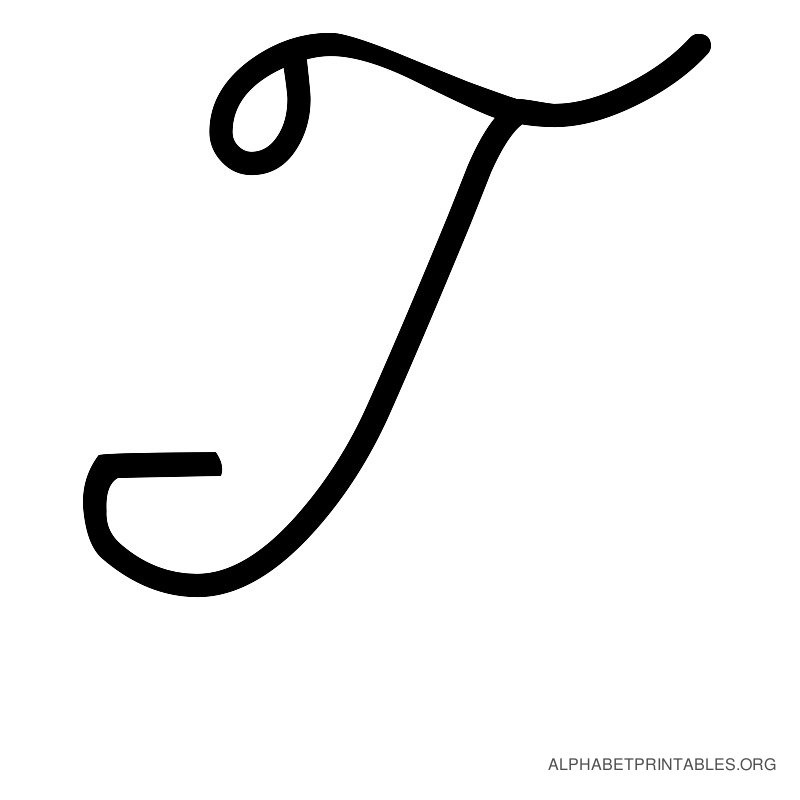Writing is not just about communication; it’s an art form that reflects personal style and creativity. One of the most captivating elements of writing is cursive script, which adds a touch of elegance and sophistication to our written words. Among the many letters in cursive, the cursive capital T stands out for its distinctive flair and grace. Whether you’re a student aiming to improve your handwriting or an adult looking to refine your penmanship, mastering the cursive capital T can significantly enhance your writing style.
In this article, we will explore the intricacies of the cursive capital T, its significance in different writing contexts, and practical tips for perfecting this beautiful letter. A cursive capital T is not just a letter; it is a representation of individual expression and artistry. Its flowing lines and curves can transform simple text into an impressive visual presentation, making it an essential skill for anyone who values the beauty of handwriting.
As we delve deeper into the world of the cursive capital T, we will address common questions, provide helpful techniques, and share examples that illustrate the elegance of this letter. Whether you’re familiar with cursive writing or venturing into it for the first time, this guide will equip you with the knowledge and skills to embrace the beauty of cursive writing, starting with the cursive capital T.
What is the Cursive Capital T?
The cursive capital T is a stylized version of the letter T that is created with fluid strokes and loops. Unlike its print counterpart, which is more rigid and straightforward, the cursive capital T flows seamlessly into the letters that follow it, creating a visually appealing connection between each character. This letter is often used at the beginning of sentences, names, and titles, making it an essential component of cursive writing.
How Do You Write Cursive Capital T?
Writing the cursive capital T involves a few simple steps that can be practiced to achieve the perfect style:
- Start with a slant: Begin at the top, drawing a diagonal line downwards to the left.
- Create a loop: As you reach the bottom, curve the line upwards to create a loop.
- Finish with a flourish: Bring the stroke back down and curve it slightly to the right, allowing for a smooth transition to the next letter.
Can You Provide Examples of Cursive Capital T?
Here are a few examples of words that begin with the cursive capital T:
- Timber
- Trust
- Tiger
- Travel
Each word showcases the beauty of the cursive capital T, emphasizing its elegant design and fluidity within the context of the word.
Why is Cursive Capital T Important in Handwriting?
The cursive capital T plays a crucial role in personal handwriting styles. Here are a few reasons why it is important:
- Artistic Expression: The cursive capital T adds flair to your writing, making it more visually appealing.
- Readability: Properly formed cursive letters enhance readability, especially in longer text.
- Signature Style: Mastering the cursive capital T can contribute to a unique signature, leaving a lasting impression.
Who Benefits from Learning the Cursive Capital T?
Learning the cursive capital T is beneficial for various individuals, including:
- Students: Enhancing their handwriting skills for academic purposes.
- Professionals: Creating polished documents and presentations.
- Artists: Incorporating cursive writing into their creative projects.
What Tips Can Help Improve Cursive Capital T Writing?
Improving your cursive capital T writing can be achieved through practice and persistence. Here are some helpful tips:
- Practice regularly: Consistent practice helps develop muscle memory.
- Use lined paper: This provides guidance for maintaining proper slant and size.
- Slow down: Take your time to focus on each stroke of the letter.
How Does Cursive Capital T Reflect Personal Style?
The way a person writes, including their cursive capital T, reveals aspects of their personality and creativity. A uniquely styled cursive capital T can convey elegance, confidence, and artistry. People often recognize distinctive handwriting styles, and a well-crafted cursive capital T can become a signature element that sets an individual apart from the crowd.
What Are Some Common Mistakes to Avoid When Writing Cursive Capital T?
While learning to write the cursive capital T, individuals may encounter a few common pitfalls:
- Inconsistent slant: Ensure that all letters maintain the same angle.
- Size variations: Strive for uniform size across all letters.
- Disconnected strokes: Focus on fluidity to avoid abrupt breaks in the writing.
Can Cursive Capital T Be Used in Modern Writing?
Yes, the cursive capital T is still relevant in modern writing, especially in contexts that appreciate the aesthetic of handwritten letters. Whether in personal notes, invitations, or artistic projects, the cursive capital T adds a personal touch that digital fonts often lack. Embracing cursive writing, including the cursive capital T, can enhance the beauty of any written piece, making it timeless and special.
Conclusion: Embrace the Art of Cursive Capital T
In summary, the cursive capital T is more than just a letter; it is a symbol of elegance and artistic expression. By understanding its significance, mastering its form, and incorporating it into your writing, you can elevate your handwriting to new heights. Whether for personal use, academic purposes, or professional endeavors, the cursive capital T will always remain a vital part of the beautiful world of cursive writing.
You Might Also Like
Epic Clash Of Titans: Sukuna Vs GojoDiscovering The Mystique Of The Wu Wei Tea Temple
Unlocking The Sweet Secrets Of The Freeze Dried Candy Machine
Unveiling The Mysteries Of Overwatch 2 Juno
Zig And Sharko: The Hilarious Adventures Of A Hyena And A Shark
Article Recommendations
- Connie Denio Crime Photos
- Benson Boone Religion
- Kirstentoosweet Of Leak
- Is Sam Reid Gay
- Number 12 Concrete
- Joe Gilgun Wife 2024
- Jenny Shaughnessy
- Sam Reid Wife
- Is Jim Carry Religious
- Yumieto Nude


